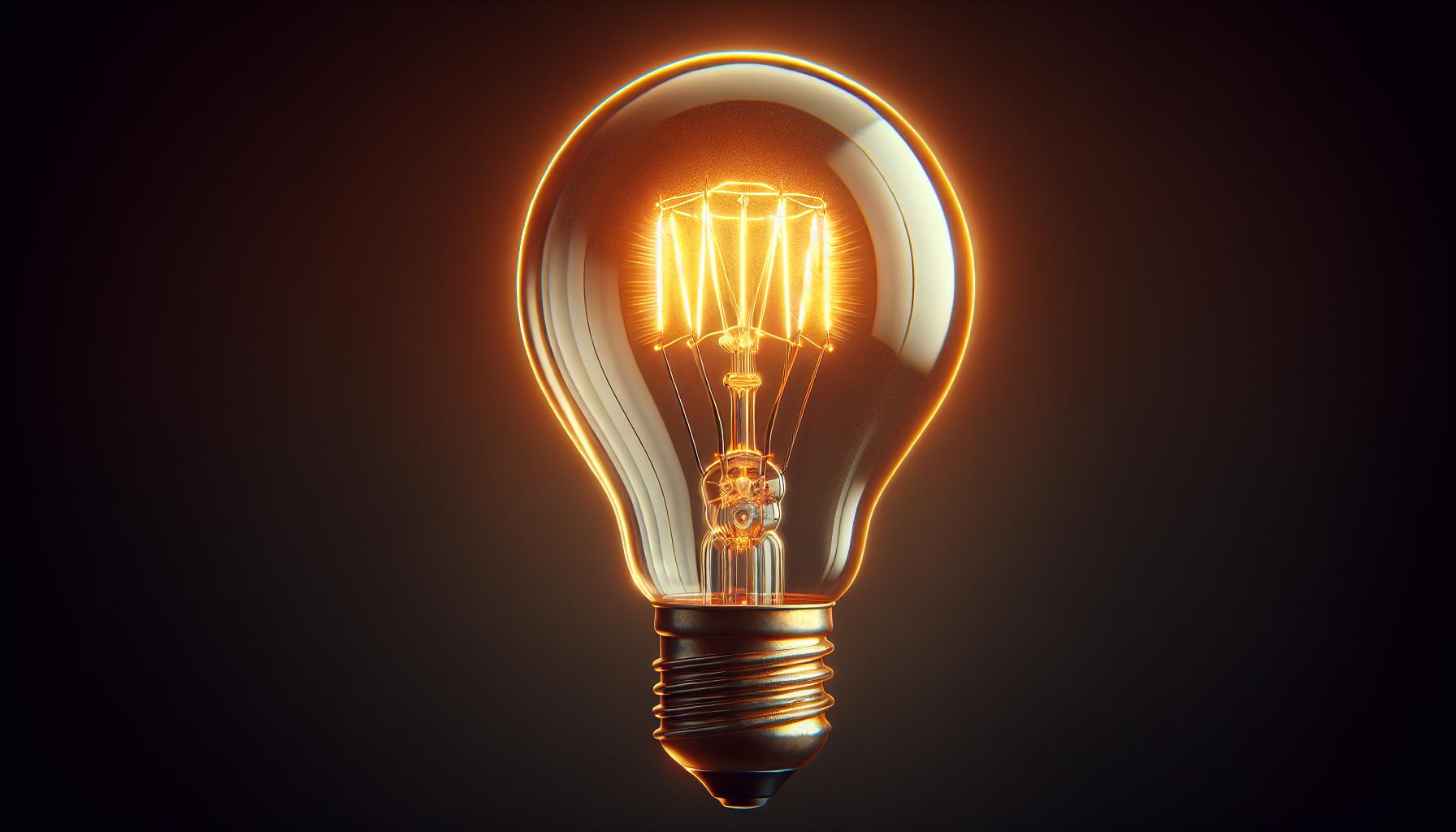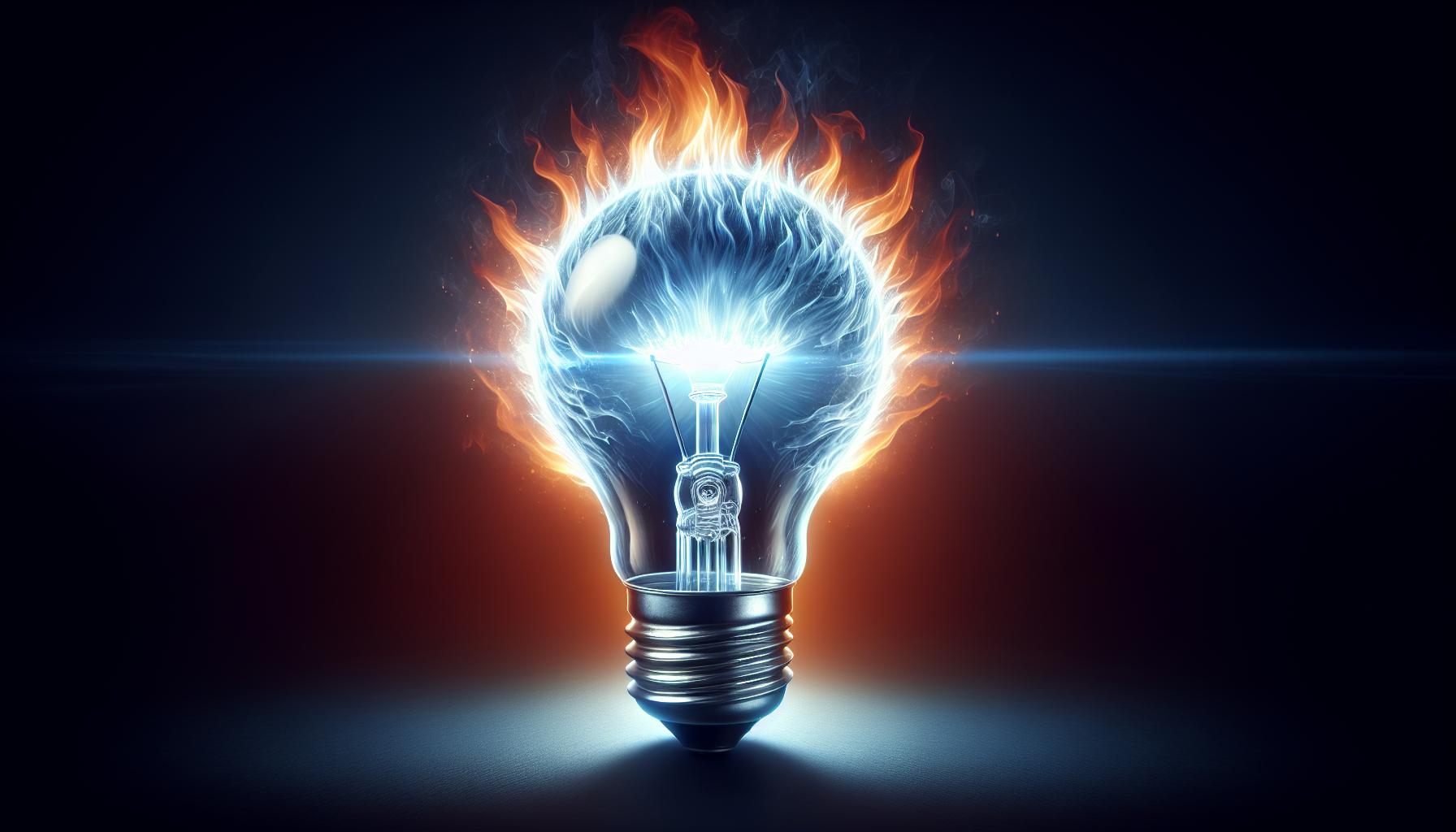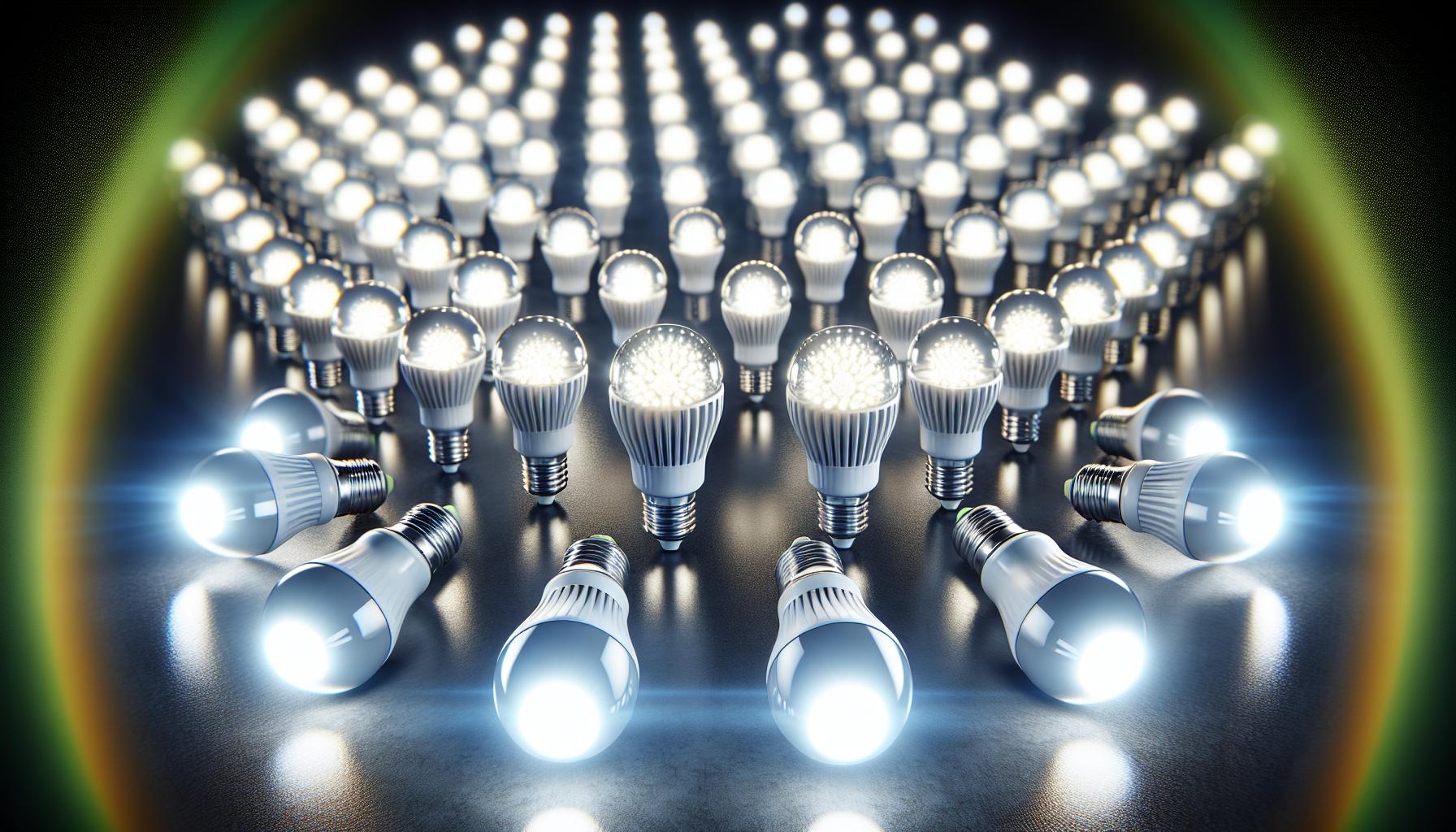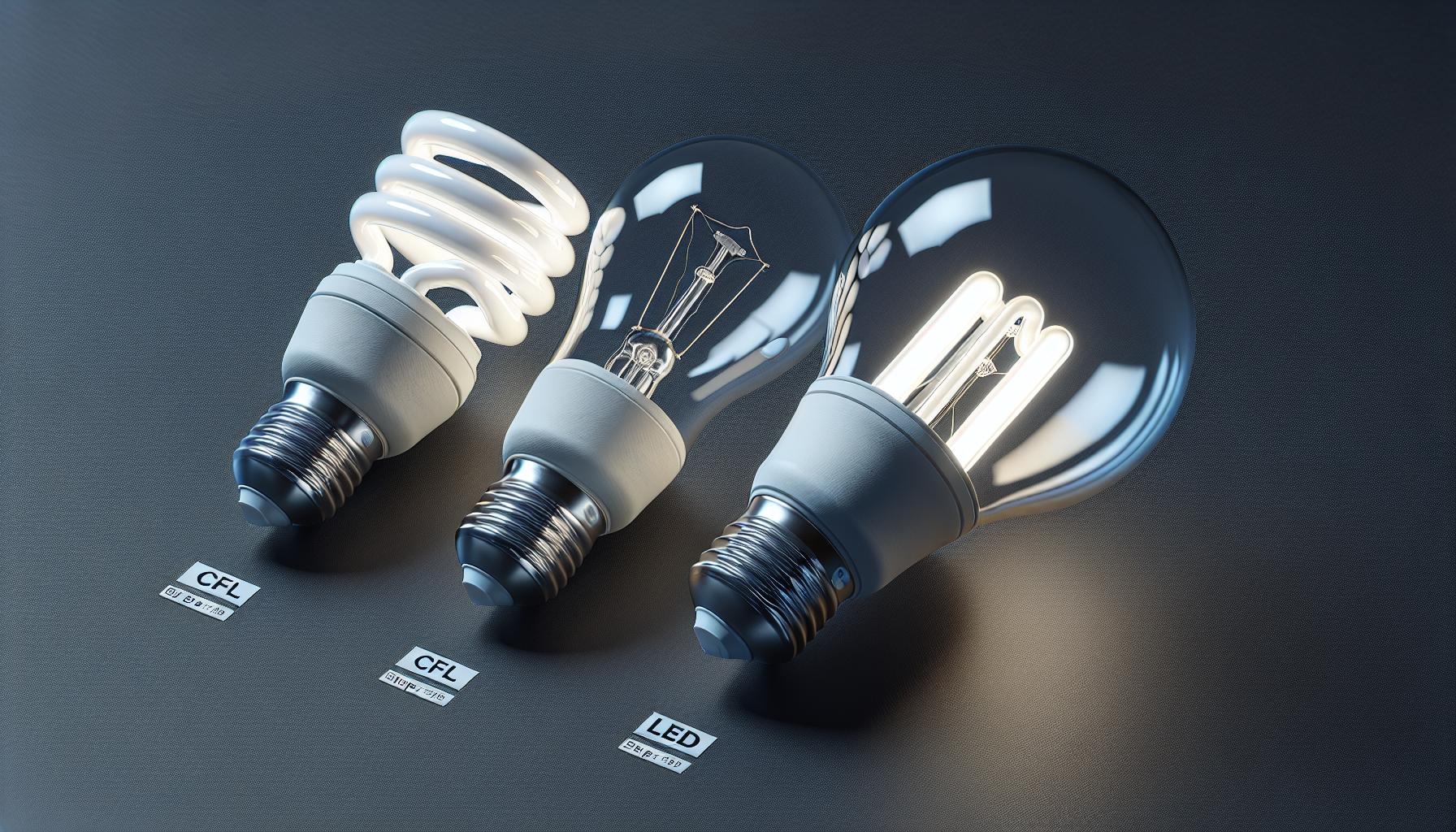When you’re flipping the switch at home, you probably don’t think twice about what’s lighting up your room. But not all light bulbs are created equal, especially when it comes to safety. You might be surprised to learn that the safest option isn’t just about durability, but also health and environmental impact.

With so many choices on the market, from incandescent and halogen to LED and CFL, it’s important to know which ones will keep you and your family safe. Let’s shed some light on the safest types of bulbs for your home, considering factors like heat emission, materials used, and overall efficiency.
The Importance of Choosing a Safe Light Bulb
When diving into your latest home DIY project, the selection of light bulbs often makes the list for a quick and effective change. Understanding the impact of your choices extends beyond aesthetics and can significantly enhance the safety of your home. Safety is not merely the absence of immediate danger but also the reduction of risk factors that could lead to future harm.
Heat emission from light bulbs is one of the top concerns. Bulbs that emit less heat, such as LED and CFL bulbs, are generally safer, especially in fixtures that are within reach or in closed spaces. Incandescent bulbs, while they might seem nostalgic or emit a warm glow, can reach much higher temperatures, which increases the risk of burns or even fire.
Durability is another key factor in bulb safety. A bulb that’s more resistant to breakage won’t just save you the hassle of frequent replacements; it will also protect you from the dangers of shattered glass. LED bulbs are renowned for their robustness, often encased in tough plastic rather than traditional glass.
Toxicity is a safety aspect that’s easily overlooked. Certain types of bulbs contain hazardous substances. For instance, CFL bulbs contain a small amount of mercury. If broken, these pose a health risk that necessitates careful cleanup and disposal. As you prioritize health within your home, opting for non-toxic, mercury-free options like LED bulbs is a wise choice.
The environmental impact of light bulbs also indirectly affects safety. Bulbs that are energy-efficient and have a longer lifespan reduce the need for frequent production and disposal. This in turn minimizes your carbon footprint and contributes to a safer and healthier environment.
- Choose bulbs that emit less heat
- Opt for durable, break-resistant options
- Select non-toxic bulbs for a healthier home
- Prefer energy-efficient bulbs to decrease environmental harm
As an avid DIY enthusiast and lighting expert, you’ll find that integrating these considerations into your home lighting selections will not only illuminate your spaces but also protect what you treasure most. Moving forward, keep these aspects at the forefront of your choices to ensure that each flick of the switch maintains the well-being of your home.
Incandescent Bulbs: A Traditional but Unsafe Choice
When you reach for the comfort of the familiar, an incandescent bulb often comes to mind. They’ve lit our homes for over a century, providing a warm glow that’s reminiscent of the early days of electric lighting. Yet, for all their nostalgic appeal, there are significant drawbacks that you should be aware of.
Firstly, let’s talk about heat emission. These bulbs operate by heating a thin filament until it glows, wasting up to 90% of their energy as heat. This isn’t just inefficiency at play—it’s a safety hazard. The excessive heat can cause burns if touched and, in rare cases, may even start fires if in contact with flammable materials.
Now consider the durability of an incandescent bulb. Typically, they are made with delicate glass and fragile filaments that break easily. If you’re like many do-it-yourself enthusiasts who enjoy a safe, maintenance-free home environment, the risk of shattered glass should be a red flag.
Then there’s the aspect of toxicity. While incandescents do not contain toxic chemicals like mercury, found in some other bulb types, their contribution to environmental toxicity is indirect. By requiring more electricity, they increase your carbon footprint and the demand for power plants, which may emit harmful pollutants.
Lastly, the environmental impact is further compromised due to their poor energy efficiency. They have a shorter lifespan and consume more energy than their modern counterparts, leading to more frequent replacements and greater resource use. The table below illustrates their efficiency compared to LED and CFL bulbs:
| Bulb Type | Average Lifespan | Energy Used |
|---|---|---|
| Incandescent | 750-2,000 hours | High |
| LED | 15,000-25,000 hours | Low |
| CFL | 8,000-15,000 hours | Moderate |
« Can You Get SAD Light Bulbs? Avoid These Common Mistakes
Is It Okay to Touch Light Bulbs? Safe Handling Tips Revealed »
As you navigate the nuances of home lighting, it’s clear that incandescent bulbs, while a staple of the past, present more cons than pros when it comes to safety and sustainability. It’s important to keep looking for lighting solutions that align with both your love for DIY home projects and your commitment to creating a safe and environmentally responsible living space.
The Problem with Halogen Bulbs
Delving further into lighting options, you might find yourself considering halogen bulbs. They’re often praised for their bright, white light and have been popular in various applications, from car headlights to desk lamps. However, halogens come with their own set of issues that are important to be aware of.
Firstly, like their incandescent cousins, halogen bulbs are quite inefficient. They consume a substantial amount of energy and convert only about 20% of it into light—the rest is wasted as heat. And speaking of heat, halogen bulbs run hot. Really hot. This isn’t just a matter of discomfort; it’s a safety hazard. If you’re a fan of DIY projects and hands-on tasks, you’ll want to think twice about using halogen lights. The risk of burns or fires is something you’ll need to seriously consider, especially if you’ve got curious kids or pets who might not understand the danger.
The durability of halogen bulbs is another point to ponder. Even though they’re slightly more long-lasting than traditional incandescent bulbs, they don’t hold a candle to LED or CFL options. Frequent replacements mean more maintenance and higher costs over time.
Furthermore, if you’re mindful of your ecological footprint, halogen bulbs might not align with your values. Despite being somewhat more energy-efficient than their incandescent predecessors, they still contribute to higher carbon emissions due to their energy demands. Plus, special care needs to be taken when disposing of them, as they can burst if dropped, creating a hazard in your home or in a landfill.
When you’re knee-deep in a home renovation or simply swapping out an old desk lamp, considering the safety, efficiency, and environmental impact of your lighting isn’t just smart—it’s essential. Keep in mind that ideal light should illuminate your space without overshadowing your peace of mind with safety and environmental concerns.
LED Bulbs: The Safest and Most Efficient Option
You’re likely aware of the buzz around LED bulbs, and it’s for good reason. LEDs are the frontrunners in safety and efficiency, offering numerous benefits over their incandescent and halogen counterparts. For starters, they’re much cooler to the touch, reducing the risk of burns or fire hazards in your home.
- Low Heat Emission: Unlike incandescent bulbs, LEDs convert the majority of the energy they use directly into light, rather than heat. This makes them a cooler, safer option, especially in spaces where bulbs are within reach or in close proximity to flammable materials.
- Durability: LED bulbs are tough. They can withstand jarring and bumping without breaking, so you won’t have to deal with the inconvenience and danger of frequently replacing shattered bulbs.
- Energy Efficiency: When it comes to your electric bill, LEDs shine. They use up to 80% less energy than traditional bulbs, which means you’ll save money and reduce your carbon footprint simultaneously.
| Comparison | LED | Incandescent | Halogen |
|---|---|---|---|
| Energy Use | Low | High | Medium |
| Durability | High | Low | Medium |
| Heat Emission | Low | High | High |
Furthermore, LEDs handle the toxicity problem in a much more efficient manner than halogen and incandescent bulbs. With LEDs, you don’t have to worry about hazardous substances like mercury, making disposal simpler and safer for the environment.
Their long lifespan also ensures that you’re not constantly climbing ladders to replace bulbs. Imagine installing a bulb and not worrying about it for over 20 years; that’s the kind of convenience and safety we’re talking about with LEDs.
While each lighting option has its own set of pros and cons, LEDs are clearly ahead of the pack in the safety department. They provide the bright, consistent light you need without compromising your safety or the health of our planet. So, when you’re planning your next home DIY project or simply replacing a burnt-out bulb, consider making the switch to LEDs—you’ll see the difference in your peace of mind and your pocketbook.
The Benefits of CFL Bulbs
In your quest to find a safe and efficient light bulb, you might have encountered Compact Fluorescent Lamps (CFLs). These bulbs are the middle ground between traditional incandescent bulbs and LEDs. They’re designed for those wanting to step up their energy efficiency game without jumping directly to the cost of LEDs.
CFL bulbs offer a considerable reduction in energy consumption compared to incandescent bulbs. They use about 70% less energy and can last up to 8 times longer. Here’s a quick comparison for you:
| Bulb Type | Energy Use | Lifespan |
|---|---|---|
| Incandescent | High | Short |
| CFL | Moderate | Moderate |
| LED | Low | Long |
These stats show that CFLs strike a nice balance if you’re transitioning from incandescent bulbs. They’re less of an initial investment than LEDs and provide a low-energy solution for your home lighting.
But there’s more to CFL bulbs than just energy savings. They come in different shapes and sizes, fitting almost any type of light fixture you have at home. Plus, CFLs offer a range of color temperatures, meaning you can select a warm, cozy glow for your living room or a cool, bright light for your workspace.
Another perk of CFLs is their safety in terms of handling. They’re made with a stronger outer material compared to the thin glass of incandescent bulbs, which makes them less prone to breaking and safer to handle during your home DIY projects.
While they do contain a small amount of mercury, which requires proper disposal, advancements in recycling and waste management have made it easier for you to dispose of them safely. Just remember, don’t toss them in your regular trash – take them to a recycling center that accepts CFLs.
As you upgrade your home’s lighting, CFLs can be an excellent step towards better energy consumption and prolonged bulb life—all while providing the flexibility and safety you need for a well-illuminated and cozy home.
Conclusion
So there you have it! When it comes to lighting up your space safely and efficiently, LEDs stand out as the top choice. They’re cool to the touch, long-lasting, and eco-friendly. If you’re looking for a balance between traditional and cutting-edge, CFLs are your go-to with their versatility and improved environmental footprint. Remember, good lighting isn’t just about brightness—it’s about making smart choices for your safety and the planet’s well-being. Now you’re all set to light up your life with confidence!
Frequently Asked Questions
What are the main drawbacks of incandescent and halogen bulbs?
Incandescent and halogen bulbs are known for their high heat emission, lack of durability, indirect toxicity (through mercury), and poor energy efficiency, making them less desirable compared to more modern lighting options.
Why are LED bulbs considered the safest and most efficient lighting option?
LED bulbs stand out as the safest and most efficient lighting due to their low heat emission, long-lasting durability, superior energy efficiency, and absence of toxic elements such as mercury.
How do Compact Fluorescent Lamps (CFLs) compare to traditional incandescent bulbs?
CFLs use significantly less energy than traditional incandescent bulbs and can last up to 8 times longer. They offer a middle ground in terms of energy efficiency and bulb life span between incandescent bulbs and LEDs.
What are the advantages of using CFL bulbs?
CFL bulbs are versatile in shape and size, compatible with various light fixtures, and provide a spectrum of color temperatures. They’re safer to handle than traditional bulbs and advancements in technology have made disposal and recycling more manageable.
Can CFL bulbs be recycled?
Yes, advancements in recycling and waste management have made it easier to dispose of CFL bulbs safely, thereby minimizing environmental impact and ensuring proper handling of toxic components.




